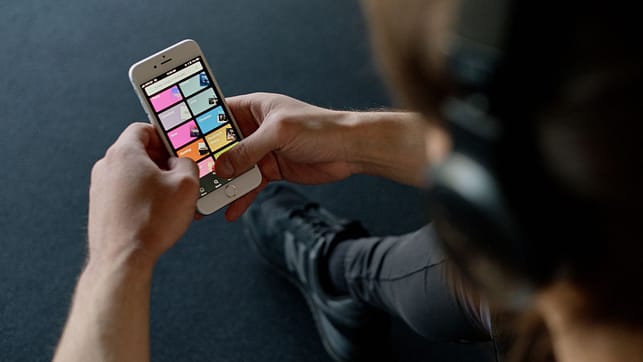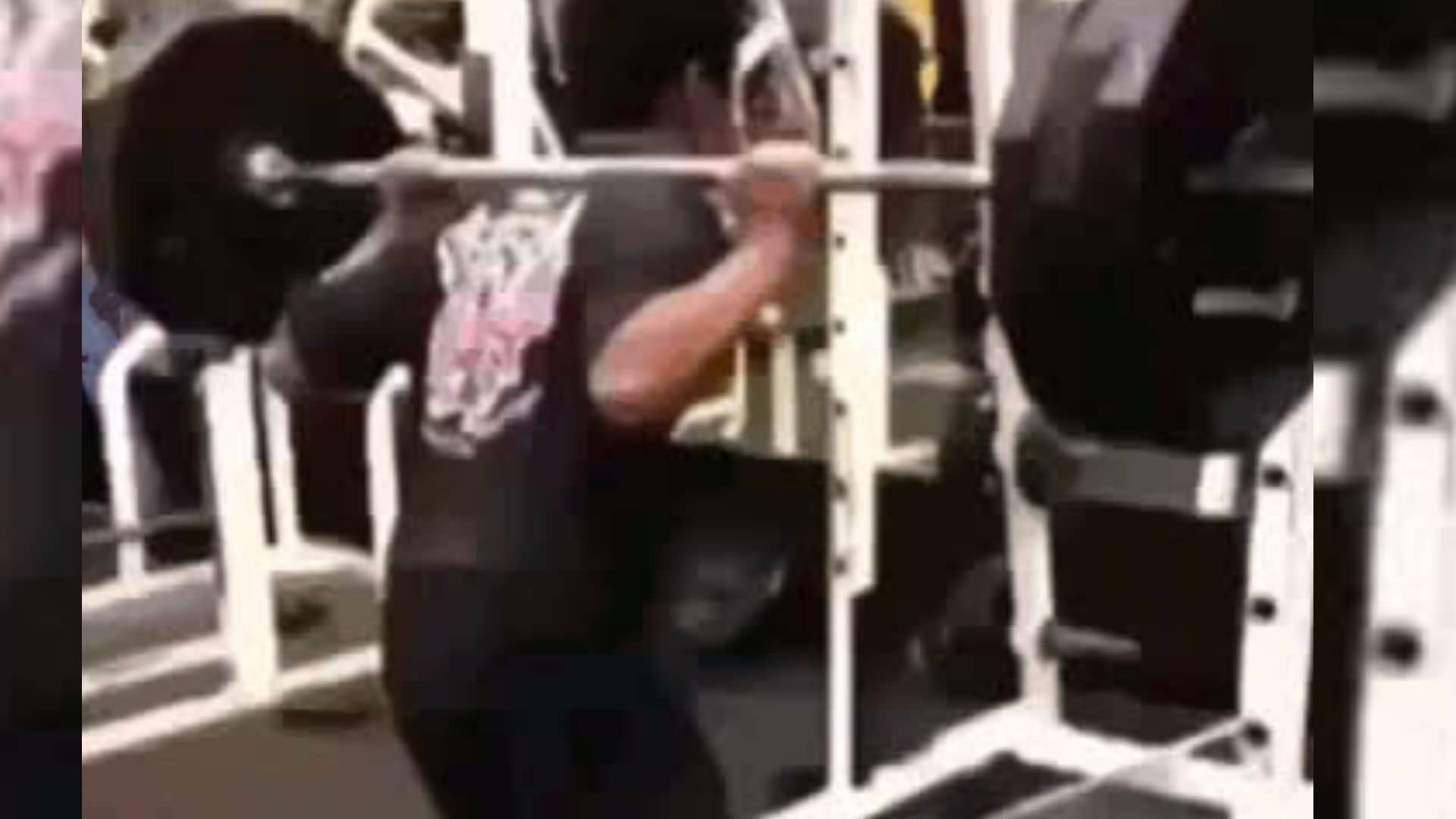Back squats are one of the most effective exercises for building lower body strength and power.
As with any exercise, it is important to track your progress to ensure that you are making gains and achieving your fitness goals. But how exactly do you track your progress when doing back squats? In this post, we’ll explore some of the best ways to track your progress and make sure you’re getting the most out of your back squat workouts.
Here are a few easy ways to track your progress when doing back squats, then I explain on them below: Keep a workout log. Use a training app. Record your lifts. Or Test your 1RM. By using these methods to track your progress, you’ll be able to see your improvement over time and adjust your workouts accordingly. Remember to be patient and consistent, and you’ll see results in no time!
Keep a workout log
Keeping a workout log is crucial for anyone who is serious about their fitness goals. It helps you keep track of your progress, which is essential for staying motivated and on track.
When you write down the weight you lifted, the number of sets and reps, and other relevant details about your workout, you can see how much you are improving over time.
For example, if you are lifting weights to increase your strength, you can track how much weight you are lifting and how many reps you are completing.
This will help you identify areas where you need to increase your weight or reps to achieve your goals. When you see your progress through your workout log, you will be motivated to keep pushing yourself and striving for improvement.
Another benefit of keeping a workout log is that it helps you identify patterns in your training. You may notice that you perform better on certain days or at certain times of the day.
You may also identify exercises or muscle groups that you need to focus on more. Having this information at your fingertips can help you tailor your workouts to your specific needs and goals.
Keeping a workout log is an effective way to track your progress, stay motivated, and identify areas for improvement. It is a simple yet powerful tool that can help you achieve your fitness goals.
So, here’s an example of what a workout log table could look like:
| Date | Exercise | Weight (lbs) | Sets | Reps | Notes |
|---|---|---|---|---|---|
| 01/01/22 | Back Squat | 100 | 3 | 8 | Felt strong, good depth |
| 01/03/22 | Deadlift | 135 | 3 | 6 | Struggled with grip, need to work on grip strength |
| 01/05/22 | Bench Press | 95 | 4 | 10 | Form felt good, felt a burn in chest |
| 01/07/22 | Barbell Row | 75 | 3 | 12 | Felt a bit of strain in lower back, need to work on form |
By keeping track of your workouts in a table like this, you can easily see your progress over time and identify areas where you need to improve. For example, you may notice that your squat weight and reps are increasing over time, but your deadlift weight has plateaued. This could indicate a need to focus on grip strength or form improvement for deadlifts. Additionally, recording any notes or observations can help you make adjustments to your training program as needed.
Use a training app
In today’s digital age, there’s an app for almost everything, including fitness. If you’re looking for a more high-tech way to track your progress, then a training app may be the perfect solution for you.
There are many training apps available that can help you track your workouts, monitor your progress, and even suggest new workouts based on your goals.
With a training app, you can enter your workout details, including the exercises you performed, the weight you lifted, the sets and reps completed, and the duration of your workout.
The app will then track your progress over time, allowing you to see how much you’ve improved and identify areas where you need to focus.
Many training apps also offer personalized workout plans based on your fitness goals, fitness level, and workout preferences.
These plans can help you stay motivated and on track to reach your goals.
Using a training app can be a great way to take your fitness to the next level.
They offer a convenient, high-tech way to track your progress and stay motivated, making it easier to achieve your fitness goals.
here’s an example of what a comparison table of training apps could look like:
| App Name | Features | Price |
|---|---|---|
| MyFitnessPal | Tracks workouts, nutrition, and weight; offers personalized workout plans; syncs with other fitness apps and devices | Free with optional premium subscription |
| Strong | Tracks workouts and progress; offers customizable workout plans; includes timers and plate calculators | Free with optional premium subscription |
| Fitbod | Creates personalized workout plans based on user goals, fitness level, and available equipment; tracks progress and offers workout customization | Free trial with optional premium subscription |
| JEFIT | Tracks workouts |

Record your lifts.
Recording your lifts can be an incredibly valuable tool when it comes to tracking your progress in the gym.
Using your phone to record yourself doing exercises like back squats from different angles, you can get a better understanding of your form and identify areas where you need to improve.
When you record your lifts, you’ll be able to see how you’re moving and whether you’re maintaining proper form throughout the exercise.
This can be especially helpful if you’re working on improving your technique or trying to avoid injury.
By reviewing your recordings regularly, you can also track your progress over time. You’ll be able to see how much weight you’re lifting, how many reps you’re completing, and how your form is improving.
This information can be incredibly motivating and can help you stay on track to reach your fitness goals.
Recording your lifts is a simple but effective way to track your progress and improve your form.
By using your phone to capture your workouts, you’ll be able to identify areas where you need to improve and stay motivated to reach your fitness goals.
| Tip: Record Your Lifts |
|---|
| What to Do |
| Use your phone to record yourself doing back squats |
| Record from different angles to see your form |
| Identify areas where you need to improve |
| Why It Works |
| Helps track your progress |
| Enables you to identify areas for improvement |
| Provides visual feedback on your form |
Test your 1RM
Testing your one-rep max (1RM) is a popular and effective way to track your progress in weightlifting.
By attempting to lift as much weight as possible for one repetition, you can determine your maximum strength for a particular exercise.
This can then be used as a benchmark for tracking your progress over time.
Testing your 1RM every few months is a good idea because it allows you to see how much progress you have made.
If you have been consistently training and increasing the weight you lift, you should see a corresponding increase in your 1RM. This can be a great motivator and help you stay focused on your goals.
In addition to tracking progress, testing your 1RM can also help you identify areas where you may need to focus your training.
For example, if you have a weak point in a particular exercise, testing your 1RM can help you determine if that weakness is due to a lack of strength in a particular muscle group or if it is a technique issue.
It is important to note that testing your 1RM can be dangerous if not done properly. It is recommended that you have a spotter present when attempting to lift your 1RM.
It is important to warm up properly and gradually work up to your 1RM. Attempting to lift your 1RM without proper preparation can lead to injury.
Testing your 1RM is an effective way to track your progress and identify areas where you may need to focus your training. However, it should be done with caution and proper preparation to ensure safety.
| Tip: Test Your 1RM |
|---|
| What to Do |
| Every few months, try to lift as much weight as you can for one repetition |
| Record the weight lifted and the date |
| Why It Works |
| Provides a benchmark to compare progress over time |
| Helps identify areas where you need to improve |
| Motivates you to push yourself to lift heavier weights |
| Tips for Safety |
| Always have a spotter present |
| Warm up properly before attempting a 1RM |
| Use proper form to avoid injury |
| Tip: How to Track Your Back Squat Progress |
|---|
| Method |
| Use a workout journal to record your sets, reps, and weights lifted |
| Use an app or spreadsheet to track your progress over time |
| Why It Works |
| Allows you to monitor progress and identify areas for improvement |
| Helps you set and achieve goals |
| Provides motivation to continue lifting and improving |
| Additional Tips |
| Take progress photos to visually track changes in your body |
| Use a weightlifting belt to improve your form and lift heavier weights |
| Incorporate different variations of the back squat, such as front squats or low-bar squats, to challenge yourself and prevent plateaus |
| Potential Whys |
| By tracking your progress, you can see how much weight you’ve lifted and how many sets and reps you’ve completed, helping you to set and achieve goals. Additionally, tracking your progress can help you identify areas where you need to improve your form or technique, as well as providing motivation to continue lifting and striving for improvement. Finally, incorporating different variations of the back squat can be a useful way to challenge yourself and prevent plateaus, while taking progress photos can give you a visual record of the changes in your body over time. |
Conclusion
To track progress when doing back squats, it is essential to have a clear understanding of proper squatting form and to gradually work up to the back squat through a series of progressions that build off the previous exercise, gradually requiring more mobility and stability to get into the proper position.
Additionally, assessment tools such as the Back Squat Assessment (BSA) can help identify functional deficits and guide progress.
Keeping a record of the weight lifted and the number of repetitions performed can also help track progress over time. It is recommended to vary the type of squat performed and incorporate different variations to target different muscle groups and prevent plateauing.
Sources:

Hey there, it’s Mike Rrsq, the Editor-in-Chief over at Jsquat.com, and I’m absolutely obsessed with all things squat fitness! I’ve been lucky enough to get some serious recognition for my work in this field. With a solid background in the fitness and wellness industry, I’ve been there right from the get-go, helping shape this website into what it is today.
You see, I’m not just the boss around here; I’m also a passionate contributor. I love sharing my insights through my articles, and trust me, they’re not your run-of-the-mill stuff. Each piece I write is a labor of love, filled with my expertise and real-world experience in the fitness universe. So, if you’re into fitness and looking for some inspiration, you’re in the right place!


